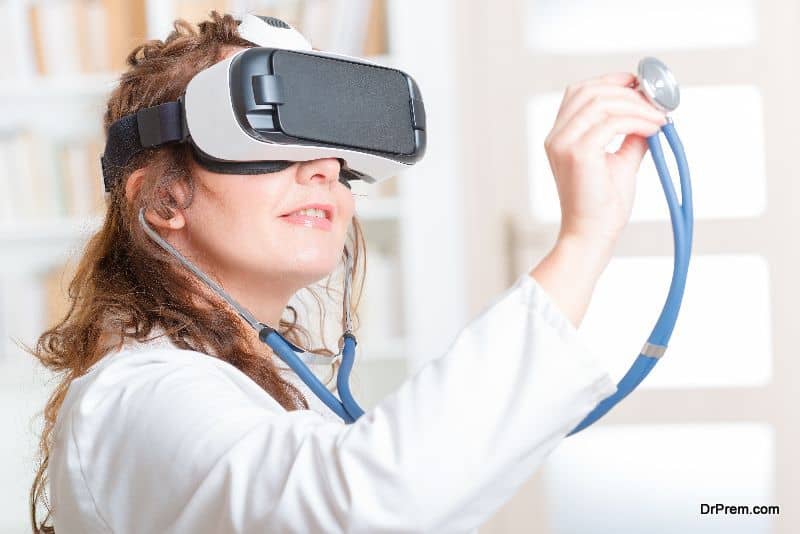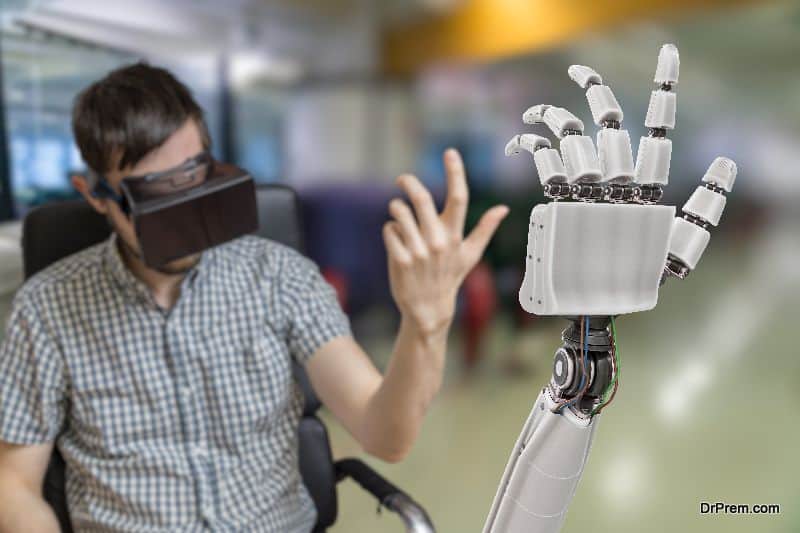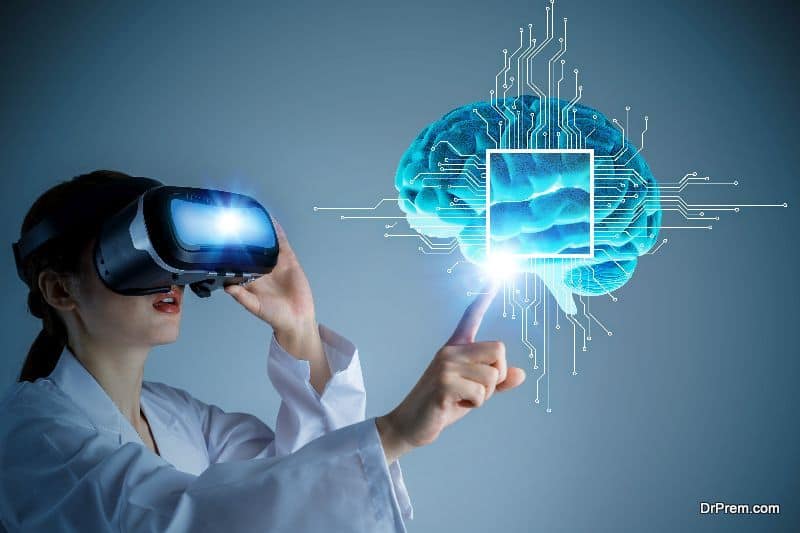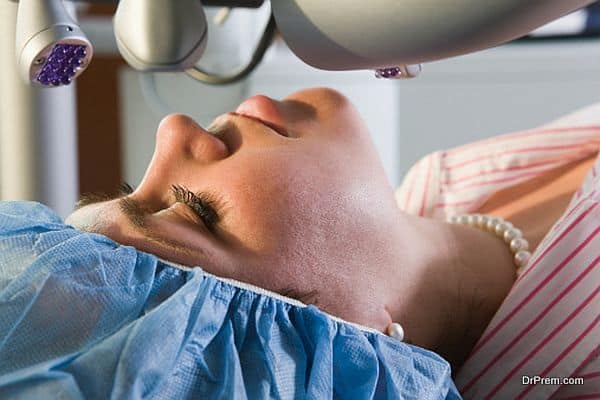Any technological innovation in healthcare benefits the main stakeholders, the physicians/caregivers and the patients. On this basis, the adoption of virtual reality in healthcare is astounding.
I have been delivering speeches in a number of high-profile healthcare conferences across the globe since quite some time highlighting the immense impact that virtual reality is going to have on future healthcare. To keep up with the latest global healthcare trends, it is my passion to explore the latest healthcare advancements. In this article, I would like to throw some light on Virtual Reality applications in healthcare:
10 cases where virtual reality is used in healthcare
-
Immersive Experience making a big difference
-
Enhanced patient engagement through ground-breaking experience
-
Easing the condition of emergency room patients
-
Democratization of healthcare training and education using 3D imagery in VR
-
Innovative VR enabled experiences revolutionizing aged care
-
VR for pain management
-
Physical therapy
-
Cognitive Rehabilitation
-
Surgical VR
-
In healthcare diagnostics
-
In mental health treatment
According to the latest statistics, over 240 hospitals in the US have adopted VR support to help in various healthcare procedures and guide patients in visualizing and understanding their treatment plans. Although it may seem tough to define the role of VR in global healthcare, it is true that this tech disruptor has been creating waves by uplifting quality of care and delivery. The best part of VR is, it is surprisingly affordable and accessible by the common public.
With expert recommendations pouring in, I am hopeful that within few years many hospitals and clinics all over the world would be able to introduce this in various types of patient care. To keep up with the latest global healthcare trends, it is my passion to explore the latest healthcare advancements. In this article, I would like to throw some light on Virtual Reality applications in healthcare:
Immersive Experience making a big difference:
It is the “immersive experience” of virtual reality that is creating waves in global healthcare crossing the realms of gaming. Encompassing a broad domain of healthcare, VR would be a game changer within the next few years. From training to therapy, VR is finding more applications leading to better treatment outcomes and patient experience.
Here are the ten cases where VR is providing amazing results in global healthcare:
- Autistic children can improve their learning and cognitive skills through VR application. The treatment environment can be managed and monitored according to the needs of the child giving him/her a pleasant learning experience.
- Immersive experiences help in generating a positive effect for patients admitted in the hospital by improving their quality of stay.
- Reduces the cost of care by reducing the number of resources required by the patient or the duration of stay in the hospital.
-
Easing the condition of emergency room patients:
- Emergency room patients go through a lot of pain, anxiety and stress which create a negative effect on the treatment outcome and general health. VR helps in reducing these problems in a non-pharmacological way.
- AppliedVR kits loaded with guided meditation lessons, 360 degree tours to exotic locations and engaging games help in distracting the patients from negative thoughts causing a better treatment outcome. These kits come with a Samsung VR headset, headphones and a Samsung Galaxy Smartphone with AppliedVR platform.
-
Democratization of healthcare training and education using 3D imagery in VR:
- Students have a better exposure to human organs and systems in 3D models and can explore them to the best possible limit without getting into the cadaver mess.
- Computer simulations help in repeat practice and study of the human body without damaging the virtual image. A cut/dissection on a cadaver can neither be reversed nor can one understand the after effects.
- 3D exploration helps in better understanding and retention.
- Millions of surgical staff lacking required skills can be trained within a short time through cost-effective VR solutions.
-
Innovative VR enabled experiences revolutionizing aged care:
- VR Goggles enhances the well being of adults through exciting VR based stimulations enabling them feel the real-life experience beyond their restricted mobility and facilities.
- VR software can also bring in social experience enabling the power of sharing together which helped people suffering from dementia.
-
VR for pain management:
- The immersive experience with Virtual Reality lessens the activity of somatosensory cortex and insula, the two pain receptors in the brain.
- Reduces the need for morphine and other high-dose painkillers.
- Effective in pain management for amputees who do not respond well with codeine and morphine.
- Enhances pain tolerance level in painful medical procedures.
-
Physical therapy:
- Patients undergoing physical therapy can improve their body movements through interactions in the VR game.
- Brings in motivation to exercise through the fun involved in VR games.
- People anxious about their walking can improve their movements and posture through the virtual environment.
-
Cognitive Rehabilitation:
- Applicable for patients suffering from stroke, brain injury struggling in performing regular activities.
- VR creates the environment encouraging the patients to practice these regular activities testing them to a higher level of complexities.
- VR helps in identifying areas of memory loss, reduced attention and difficulty in decision making.
-
Surgical VR:
Apart from training surgeons, VR in surgery helps in the following:
- Surgical planning through visualization of different anatomic models of patients.
- Surgical rehearsing before initiating a complex surgery. The surgeons can be prepared well ahead to tackle the possible outcomes.
- Enables high-precision surgical procedure involving minimum risks and errors.
- Increases performance efficiency of surgeons.
- Reduces patient trauma significantly.
- It is greatly adopted in robotic surgery where robotics controlled by physicians performs high-precision surgeries with low complication risk requiring much less time.
- Enables telesurgery where the patient and surgeon are in different locations.
-
In healthcare diagnostics:
- VR enables better diagnosis in conjunction with MRIs saving the need for repetitive investigation and minimally invasive surgery.
- Due to easy navigation in different regions of the brain with VR enabled 3D environments, physicians are able to diagnosis specific ailments like Alzheimer’s, Schizophrenia etc.
- Promising results are observed in detecting the early changes in the peripheral vision of Glaucoma patients.
- VR headsets can measure the range of motions of cervical spine and help in detecting any abnormality.
-
In mental health treatment:
One can never ever imagine how VR can transform mental health treatment. The Oculus Rift headset takes the patient to a new world. Even if the environment is virtual, the person feels it as a real.
- It is extremely effective in treating different phobias like Fear of heights, spider phobia etc. through non-invasive physiological monitoring and enabling force feedback.
- It has immense potential in treating PTSD (Post Traumatic Stress Disorder), Schizophrenia and delusions.














